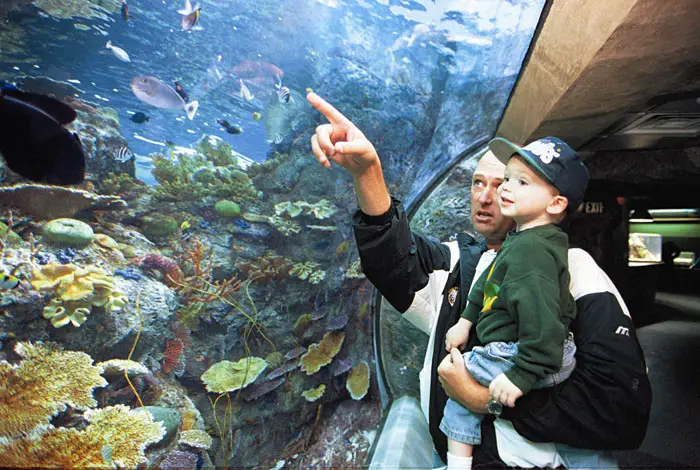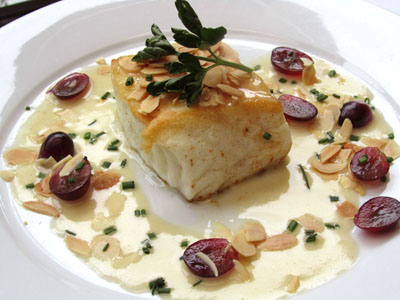“The doomsday predictions are exaggerated. We will not run out of wild fish by 2050.
Not all fish stocks are over-fished,” said Andrew Gruel. Gruel is manager of Seafood
for the Future, part of the conservation effort by Aquarium of the Pacific in Long Beach.
Recently (May 17, 2010) Great Taste sponsored another delicious HIP tasting event at Wild Fish Seafood Grille in Newport Beach with guest speaker Andrew Gruel discussing the future of seafood. He explained to an interested audience that farmed seafood has been labeled as bad by surveyed consumers who are not well informed. “Many fish are farmed very well in closed containment with good feed conversion ratios in an environmentally sound manner,” Gruel said.
The Aquarium fully supports farmed Atlantic salmon from both closed and open containment systems.
Feed conversion is the amount of feed in pounds it takes to produce a pound of fish.
For example, “Current ratios are 2.4 pounds of small fish to make 1 pound of farmed salmon as opposed to wild where it is 10 pounds of small fish to make 1 pound of salmon,” Gruel explained. Farmed clams, mussels and oysters in contrast need none.He listed catfish, tilapia, clams, oysters and mussels as other positive examples of farmed fish or aquaculture.
Gruel continued by noting that about 40% of the wild salmon and white sea bass are ranched. “Eggs are cultured in a hatchery and given feed to gain size and strength. Once large enough, they are released into the ocean to forage for food,” he said.
Debunking myths is not what chefs do, nor do they have time to research which species are endangered and which are not. “The Long Beach Aquarium will provide that information for you and let you decide. We encourage chefs to jump to other species such as cobia or escolar,” Gruel  said.
said.
The aquarium will work with the restaurant on their seafood menu and allow approved restaurants to display their logo on menus. “We try and get restaurants to stay away from fish that are very long lived, slow to reproduce and therefore vulnerable to over-fishing such as orange roughy, Chilean sea bass, shark and bluefin tuna (unless it comes from a certified body),”Gruel said. However, Chilean sea bass is okay from certified stocks.
The aquarium even provides complementary adult aquarium tickets, a $25 value, to any guest that orders a seafood selection. “You could order fish and chips at Parkers’ Lighthouse for $16 and get a free ticket,” he said.
Guests enjoyed a wonderful lunch of a salmon tartar, shrimp salad and almond-crusted halibut with white wine sauce.
Please see their website for participating restaurants and more information.
http://seafoodforthefuture.org/
The website’s comparison chart is straightforward with green, yellow and red dots assigned to common seafood species. The dots were assigned by groups such as the Blue Ocean Institute, Greenpeace and Monterey Bay Aquarium’s Seafood Watch. Species such as wild caviar, monkfish, Atlantic salmon, grouper and red snapper are red dots across every scientific group listed. On everyone’s green list? Catfish, (US farmed), arctic char, clams, mussels, sardines and sablefish.
The waters get a big murky when it comes to fish such as tuna. Albacore can be either long line or pole/troll (fishing method) and earns all three designations-red, yellow and green-depending on the group that has done the research. Long line was more negative than pole/troll. Bluefin tuna is red across the board and canned tuna gets a few yellows. Bigeye, bluefin(all red) skipjack and three kinds of yellowfin add to the confusion a consumer might feel when either buying tuna to cook at home or ordering in a restaurant.
















